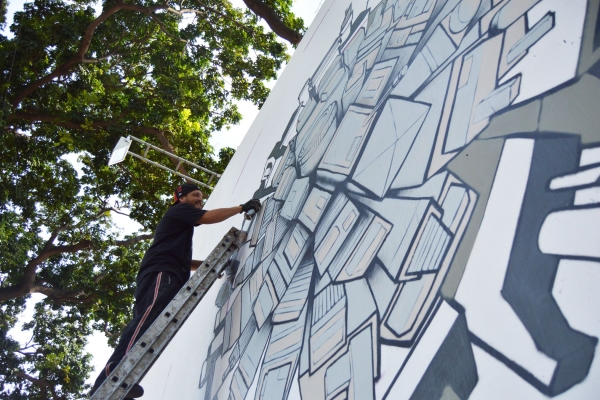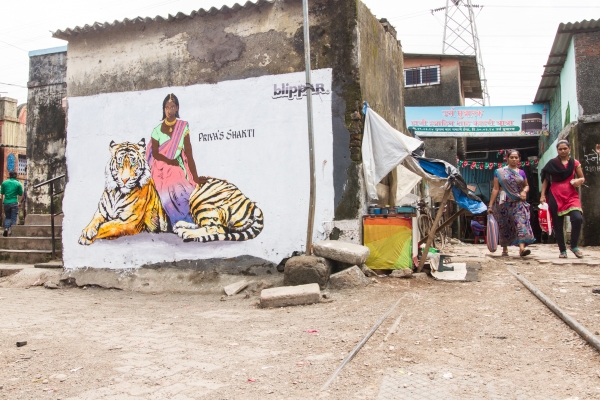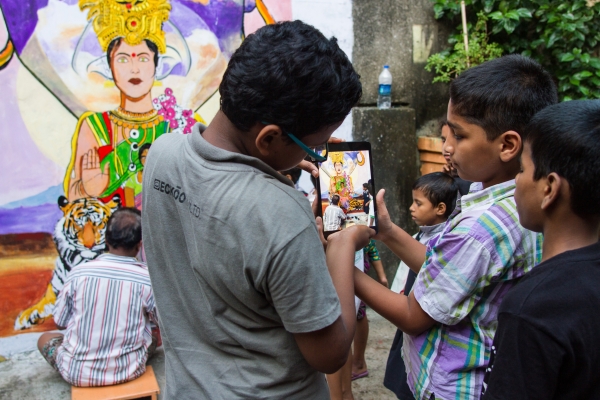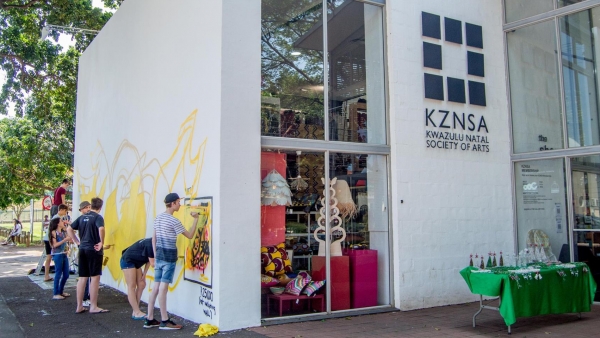Durban has one of the most vibrant street art scenes in South Africa, and at the center of it is KZNSA Gallery located in Glenwood. The district has an eclectic mix of cultures and economic diversity, as well as dynamic youth culture. The gallery has become the artistic hub for the community with an ethos of “transformation, incubation, and activation.”

Street artist Iain EWOK Robinson at KZNSA Gallery. Photo by Niamh Walsh-Vorster.
On the Culture Trip website, Angela Shaw, the curator of the gallery, guides us through some of the emerging South African street artists in the city. What is clear from the article is that KZNSA’s ethos is all over the city. The artists reflect the community in their murals, and in turn the community supports public art. KZNSA Gallery dedicates their outdoor wall space to street artists, and new work is created on a regular basis. I am excited to experiment with their “activation” ethos and play around with augmented reality and street art, and work with local artists to make their murals come to life.

Priya on a Tiger mural in Mumbai. Photo by Tushar Prakash.
When I was creating the comic book series, “Priya’s Shakti” featuring India’s first female superhero who is a rape survivor, I was trying to figure out how to make the work popular and accessible. I discovered the power of public art through the work of Diego Rivera. He created massive murals in public spaces that showed regular people enduring and transforming history. His work was both a powerful artistic and political statement. Using his philosophy, I decided to take the iconic image of “Priya on a Tiger” and put it in public spaces in India. I think those murals have been seen by over 3 million people.
Throughout Durban, there are dozens of murals consciously (or subconsciously) influenced by Diego Rivera. The artists are painting regular people from their community on enormous walls or bridge columns, thus transforming the mundane into something beautiful and sublime.

Priya on a Tiger mural in Mumbai. Photo by Tushar Prakash.
Later, I discovered how to activate these murals and make them come to life through augmented reality. This emerging technology has the potential to change how we perceive and engage with the real world through a digital layer. Artists can create a monologue or physical version of their art and then re-imagine it through a digital transparency over the original without altering it. AR is a new toolkit for artists and for groups of artists to collaborate on new ideas. Even though the painting or mural remains consistent — the digital layer can change instantly and react to the viewer’s perception of it. I am looking forward to exploring Durban’s street art scene with local artists and instill a spirit of adventure and play into the artwork.

